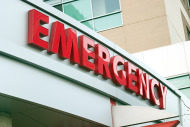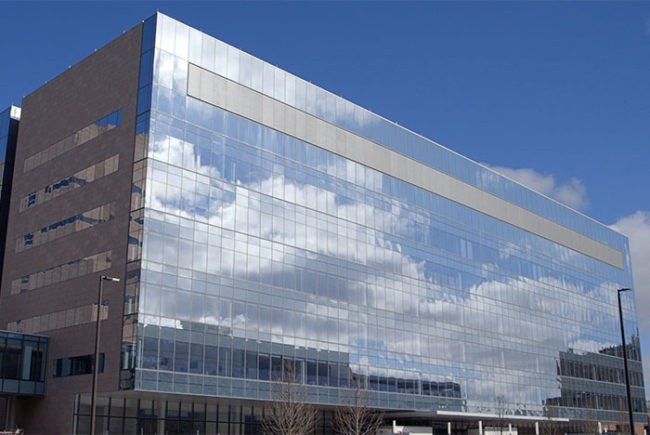A full year and then some has passed since the pandemic was declared. And although public health campaigns and vaccine distribution has helped to significantly reduce the scramble to create more space to handle patient surges, facilities professionals and regulatory experts say there are many lessons learned from this time that can help the health care community to be prepared should a similar event occur in the (hopefully) distant future.
Skip Gregory, AIA, NCARB, is a health care facility consultant who previously held the position of Bureau Chief for the Office of Plans and Construction, Agency for Health Care Administration in the state of Florida for 20 years. He saw firsthand the challenges faced by health care organizations and local governments as they looked to create more space for patient surges.
Strategies such as converting non-health care facilities into alternate care sites, or transforming existing hospital spaces to handle COVID-19 patients was crucial in helping to meet patient demand — especially in hard-hit areas — but didn’t come without its complications, Gregory says.
Last July, Gregory received a call from a health facilities manager regarding a mobile unit that was delivered to the hospital unexpectedly. The unit which was purchased by the state of Florida from a company in Mexico that advertised the it as a substitute for an intensive care unit (ICU) was sent to the hospital to be used as a temporary addition for the ICU due to patient overflow from COVID-19. However, a quick assessment revealed that the mobile unit was not equipped to comply with basic medical codes and standards for life safety systems necessary for an observation unit, let alone the needs of high-acuity patients.
The mishap was a direct result of communication missteps. Although the purchase of this unit was made with good intentions, Gregory says some upfront communication would have alleviated lots of confusion and wasted resources.
“Before anything was purchased, the state’s Agency for Health Care Administration that licenses hospitals in Florida should have been contacted,” Gregory says. “They would have been able to inform the other departments in the state of the codes and standards that need to be met prior to the purchase. That way, perhaps, necessary changes could have been made to the unit before it was purchased and sent to the hospital. Such mobile units may look great to a person with limited knowledge of the myriad codes and standards required for a hospital environment, but he or she may be missing many of the important life safety issues. For instance, is the med-gas piping system verified to meet NFPA 99, Health Facilities Code? Does it have the right number of outlets required for an ICU? Did anyone look at the quality of electrical system? These are the types of things we need to verify first.
“As a result of this lack of communication between different state departments with different responsibilities, the mobile unit was not able to be used for medical care so the money used to purchase it was wasted,” Gregory continues.
When creating a patient surge space, consulting with someone who has engineering, codes and standards expertise early in the process can help to mitigate a number of issues down the line. In this article Turning temporary structures into permanent spaces, Patrick Rhinehart, CSP, CHFM, discusses the process his team went through to erect two temporary facilities at Northside Hospital that will transition to permanent use post-pandemic.
In the article, Rhinehart details how the careful communication between his hospital, the local authorities having jurisdiction and the local Centers for Medicare & Medicaid offices helped to ensure these structures could remain permanently.
Another strategy employed by many smaller health care systems during the height of the pandemic was to look internally at existing space.
William Payne, III, CFPS, CHFM, MBA, associate vice president of facilities management at Wake Forest Baptist Medical Center in Winston Salem, N.C., was tasked with looking at alternate care sites for his health system at the beginning of the pandemic. By modifying a national model to reflect its service area, he was able to produce a predictive model that could estimate the number of beds needed at a given time.
“It was somewhat art, part science and little bit of black magic, but it gave us something to measure and track,” Payne says. “In looking over our model, which looks very different from a place like New York that sits in the epicenter, it didn’t take long for us to realize there was no need for us to put patient beds in malls. So, we quickly turned our search for alternate beds internally.”
In looking internally, the hospital could ensure that spaces converted for COVID-19 treatment already had the necessary infrastructure for life safety systems, such as oxygen supply. The hospital was able to repurpose surgery-based nursing units for COVID-19 patients and had plans to convert areas such as operating rooms and post-anesthesia care units for patient surge space. A combination of forcing the air handling units into economizer modes, re-air balancing patient rooms and innovative, but nonetheless safe use of portable HEPA filter units helped to create negative air pressure in areas throughout the hospital.
Whether hospitals look internally or externally when creating additional care space, the experts agree that patient and staff safety has to remain the No. 1 priority, which is why it’s important to pull in engineering staff and experts early into that decision-making process.
“At the beginning of this pandemic, there were many government waivers being issued, which is necessary, because in an emergency state you can’t meet every requirement,” Gregory says. “But sometimes when people think about waivers, they think that means you can do anything you want to. But you can’t. You can do a lot of things, but there other things you have to be concerned with if we are going to keep patients safe. And who makes those decisions? The people who know about these systems — the engineers and the code experts — need to be an early part of making those decisions.”





